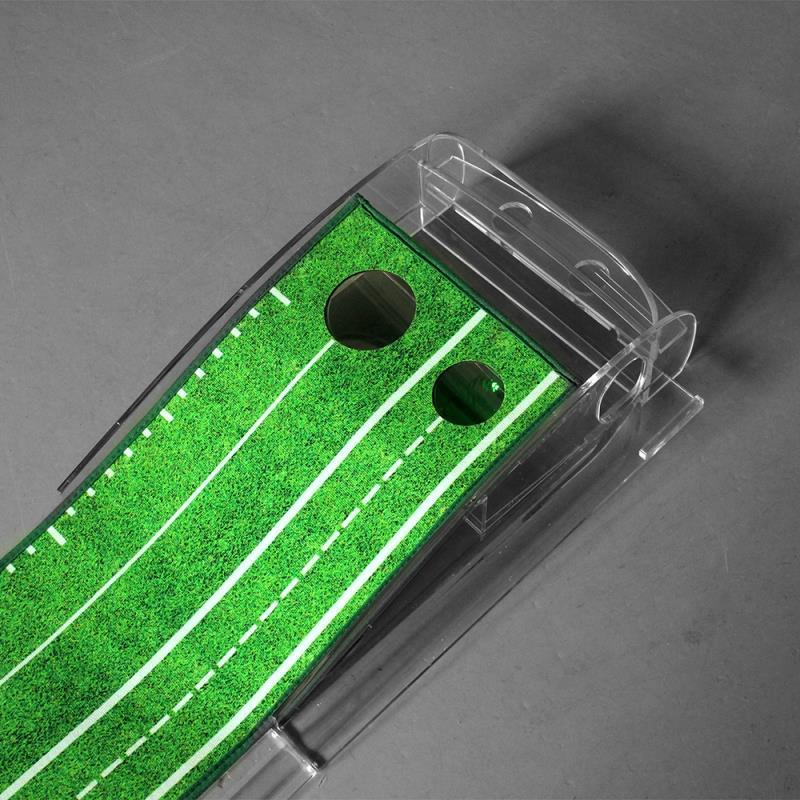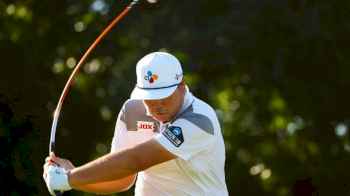5 fundamentals you need to understand for better putting
Like any golf skill, good putting is earned — not given. Solid technique matters, but understanding the core concepts and the cause-and-effect behind them is what helps you become your own best coach and consistently shave strokes.
1. Your putting path follows your shoulder line
Your stroke path influences both contact and start line — but it’s not something you should try to manufacture. The putter naturally swings along the line your shoulders create.
2. Posture sets your shoulder line
Good posture is the foundation. When you hinge forward from the hips and let your arms hang naturally under your shoulders, your stroke will track along that shoulder line every time. Let the motion happen rather than trying to steer it. Path is a result of solid setup, not something you impose.
3. Backstroke length controls distance
Ask golfers what controls distance and you’ll hear plenty of different answers. But from a physics standpoint, it’s simple: distance comes from backstroke length, not how hard you “hit” it. A shorter backstroke falls more slowly, delivering less energy. A longer one falls faster, sending the ball farther. Let the length dictate the speed — not effort.
4. The “acceleration” myth
When a putt comes up short, friends love to say you “decelerated.” In reality, your backstroke was probably just too short. Great putters often have a forward stroke that’s slightly shorter than their backstroke because the ball collision slows the putter down. Recently, while teaching alongside Sam Burns — one of the best putters on the PGA Tour — his stroke was a perfect example: smooth, unforced, with a natural fall. No added hit. No intentional acceleration. Just pure pendulum motion and elite distance control.
5. Most putts break
Nearly every putt has some curve, even the shorter ones golfers often assume are straight. You may not need to aim outside the hole on tap-ins, but you do need to identify the break before you set your aim. Start your routine with a read — not with your setup.
Perfect Putting Mat
View Product
The post 5 fundamentals you need to understand for better putting appeared first on Golf.




